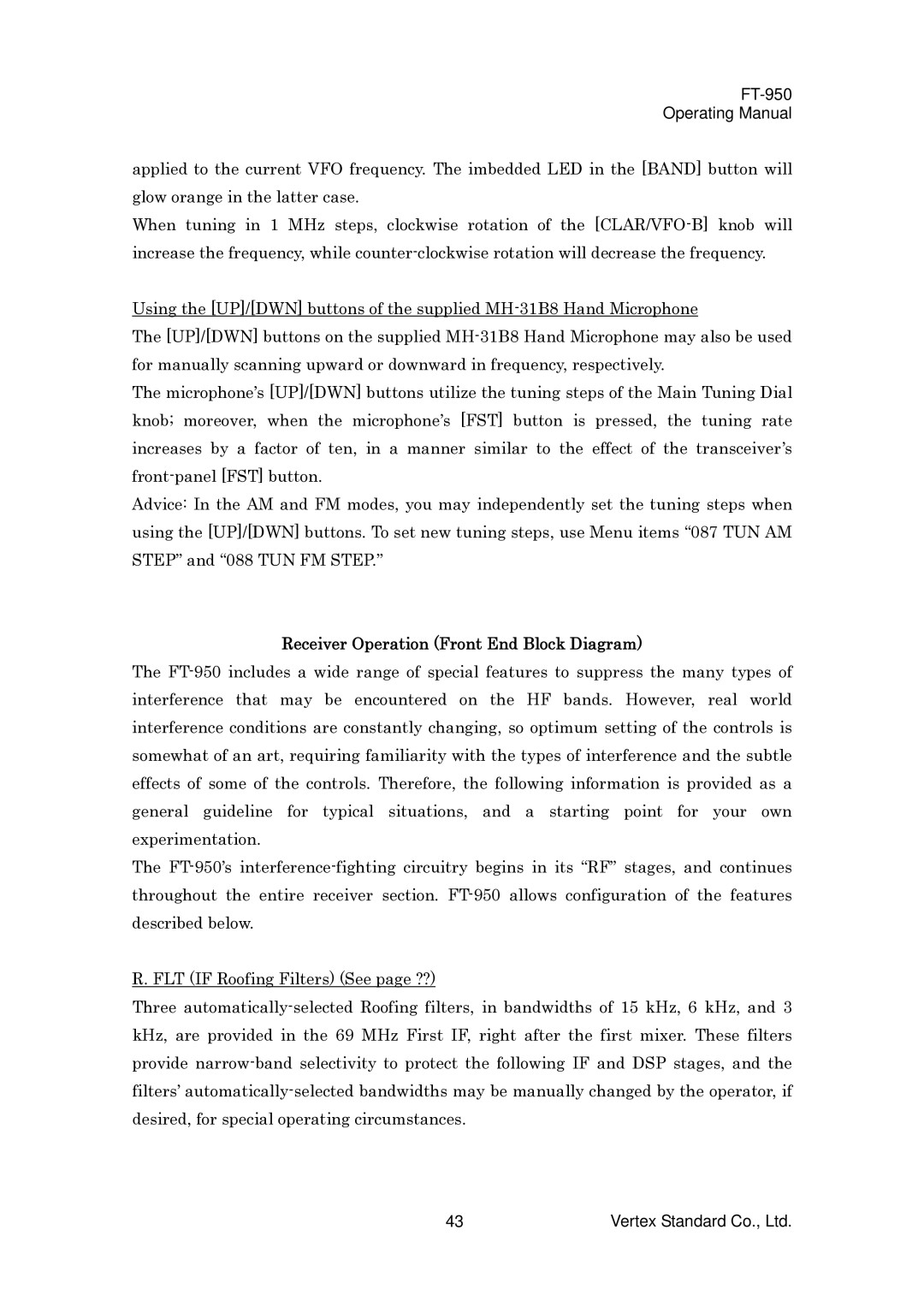FT-950
Operating Manual
applied to the current VFO frequency. The imbedded LED in the [BAND] button will glow orange in the latter case.
When tuning in 1 MHz steps, clockwise rotation of the [CLAR/VFO-B] knob will increase the frequency, while counter-clockwise rotation will decrease the frequency.
Using the [UP]/[DWN] buttons of the supplied MH-31B8 Hand Microphone
The [UP]/[DWN] buttons on the supplied MH-31B8 Hand Microphone may also be used for manually scanning upward or downward in frequency, respectively.
The microphone’s [UP]/[DWN] buttons utilize the tuning steps of the Main Tuning Dial knob; moreover, when the microphone’s [FST] button is pressed, the tuning rate increases by a factor of ten, in a manner similar to the effect of the transceiver’s front-panel [FST] button.
Advice: In the AM and FM modes, you may independently set the tuning steps when using the [UP]/[DWN] buttons. To set new tuning steps, use Menu items “087 TUN AM STEP” and “088 TUN FM STEP.”
Receiver Operation (Front End Block Diagram)
The FT-950 includes a wide range of special features to suppress the many types of interference that may be encountered on the HF bands. However, real world interference conditions are constantly changing, so optimum setting of the controls is somewhat of an art, requiring familiarity with the types of interference and the subtle effects of some of the controls. Therefore, the following information is provided as a general guideline for typical situations, and a starting point for your own experimentation.
The FT-950’s interference-fighting circuitry begins in its “RF” stages, and continues throughout the entire receiver section. FT-950 allows configuration of the features described below.
R. FLT (IF Roofing Filters) (See page ??)
Three automatically-selected Roofing filters, in bandwidths of 15 kHz, 6 kHz, and 3 kHz, are provided in the 69 MHz First IF, right after the first mixer. These filters provide narrow-band selectivity to protect the following IF and DSP stages, and the filters’ automatically-selected bandwidths may be manually changed by the operator, if desired, for special operating circumstances.
43 | Vertex Standard Co., Ltd. |
